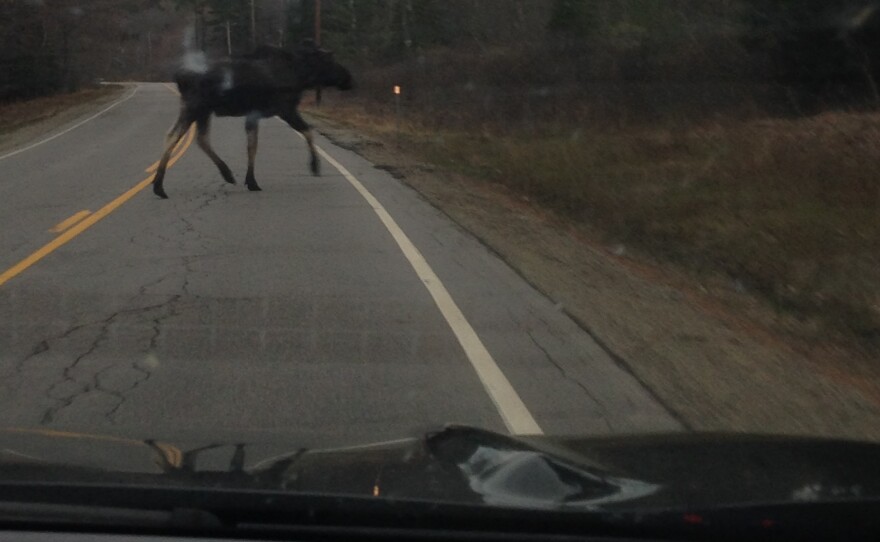The White Mountains live up to their name well into spring. WAMC’s Jim Levulis hiked one of the range’s southern peaks and sent this report.
Mother Nature made it very clear from the get-go that she was in the driver’s seat for my trek up New Hampshire’s Mount Moosilauke in late April. Before I even stepped outside, a moose along a roadway made us turn around to get another look. To be clear, my friend Alex was actually in the driver’s seat, not the aforementioned boss of the great outdoors. This was the first moose I had ever seen in person and getting my eyes on this scraggly, sizable creature was the highlight of the drive that started at about 5:30 a.m. from a Super 8 in White River Junction, Vermont.
Located near Benton, New Hampshire, Mount Moosilauke rises 4,802 feet above sea level. Alex, his dog Tracer and I took the 3.6-mile Gorge Brook Trail to the summit. Leaving the parking lot for the trail head, we passed construction vehicles staged for the reconstruction of the Moosilauke Ravine Lodge. Expected to open in the fall, it will be used by Dartmouth College’s Outing Club. The original lodge was built in the 1930s to serve some of the nation’s earliest competitive skiing. Plans include a bunkhouse, a greenhouse and an outdoor pizza oven – an extraordinary rustic getaway. And even though Mount Moosilauke is in the White Mountains, I spotted some Adirondack chairs on the bunkhouse porch.
Leaving the lodge area, a two-log bridge over a raging river dropped us at the Gorge Brook trailhead. From there we started our ascent and soon the conditions changed. Gone was the dirt and bare rocks, as snow moved in instead. This change wouldn’t have been that noteworthy for spring hiking in the Northeast, except for a bit of deception. There were two types of snow – the hard, packed down version and the soft variety. And the real difficulty was that in most areas, they looked the same. Especially in certain sections, where fallen pine needles made it look like remnants of snow among blades of grass, instead of several feet of snow.
Expecting snow and ice, I had picked up a pair of crampons the day before. These attachable spikes allowed me to easily climb up and down slippery snow and ice, but at times I wished I had snowshoes to disperse the weight of each step. Because when I unknowingly stepped on that soft snow, down I went. I lost count of how many times one of my legs went plunging into the snow, at times up to my waist. Standing with one leg three feet below the other, Alex had to help me out of my predicament. Meanwhile, Tracer seemed to be immune to the embarrassing falls – known as postholing. I guess distributing your weight among four legs rather than two is a better strategy.
After grappling with the postholes, we figured out that the hardest snow was at the very center of the trail. So I tried putting one foot directly in front of the other, sort of like walking a tight rope. But as we gained elevation, the line of hard snow thinned. Nearly above tree-line, the views were stunning, but our eyes were focused on the ground. As one hiker we met at the summit put it, it was like walking on a monorail curving up the side of the mountain.
Finally above the tree-line, the snow was gone and the wind picked up.
After hiking most of the way in a t-shirt, I put on my jacket to keep away the cold air and wind. At the summit, there were rock walls offering a wind-free sanctuary to eat my lunch, which consisted of a protein bar.
After the post-holing, Mother Nature blessed us with a real treat at the summit. The sun broke through the clouds, offering views of the rest of the stunning White Mountains to the north.






























